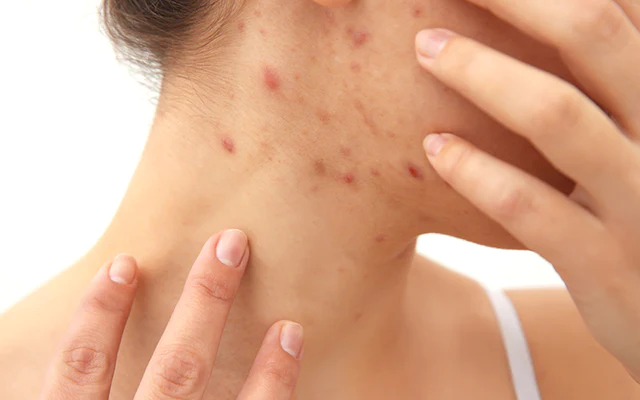Red dots on the skin can be concerning, but they often have various causes. In this informative article, we delve into the world of red skin dots, exploring their possible origins, associated symptoms, and when to consult a healthcare professional.
Table of Contents
Introduction
Red dot on the skin, medically known as petechiae or cherry angiomas, can appear for numerous reasons. While they’re usually harmless, understanding their underlying causes can help you make informed decisions about your health. In this article, we’ll break down the potential culprits behind these red dots and provide essential insights.
Common Causes of Red Dots on the Skin
- Skin Irritations
Skin irritations, such as contact dermatitis or allergic reactions, can lead to red dots. These conditions often occur due to exposure to irritants like chemicals, plants, or certain fabrics. The resulting redness can vary from mild to severe.
- Infections
Bacterial, viral, or fungal infections can cause red spots on the skin. Conditions like cellulitis, shingles, or ringworm may manifest with redness and discomfort. Timely treatment is crucial to prevent complications.
- Petechiae
Petechiae are tiny, red or purple dots that appear when small blood vessels beneath the skin break. They can be a sign of various underlying issues, including platelet disorders, infections, or certain medications.
- Cherry Angiomas
Cherry angiomas are harmless growths made up of small blood vessels. They often appear as bright red dots and become more common with age. While generally benign, they can be removed for cosmetic reasons.
- Allergies
Allergic reactions to food, medications, or insect bites can result in redness and itching on the skin. Severe allergies may even cause hives or welts, which can be red and raised.
- Heat Rash
Heat rash, also known as prickly heat, can lead to red, itchy bumps or dots. It typically occurs in hot and humid weather when sweat glands become blocked.

When to Seek Medical Advice
While many red dots on the skin resolve on their own, certain circumstances warrant medical attention:
- Sudden Onset: If you notice a sudden, unexplained appearance of red dots, especially if they’re accompanied by other symptoms, consult a healthcare provider promptly.
- Bleeding or Pain: If the red dots are bleeding, painful, or spreading rapidly, seek immediate medical assistance.
- Fever: A fever accompanying red dots may signal an underlying infection that requires treatment.
- Persistent or Recurring Dots: If red dots persist for an extended period or recur frequently, consult a dermatologist to rule out underlying conditions.
FAQs
Q: Can stress cause red dots on the skin? A: Yes, prolonged stress can weaken the immune system and potentially lead to skin issues, including redness.
Q: Are all red skin dots harmless? A: While many are harmless, it’s essential to monitor them. Any concerning changes should be evaluated by a healthcare professional.
Q: Can dietary choices affect skin redness? A: Yes, certain foods can trigger allergies or skin reactions in sensitive individuals, leading to redness.
Q: Are red dots on the skin more common in older adults? A: Yes, some types of red skin dots, like cherry angiomas, become more prevalent with age.
Q: How can I prevent heat rash and its red dots? A: Stay cool in hot weather, wear breathable fabrics, and keep your skin clean to reduce the risk of heat rash.
Q: Can red dot on the skin be a sign of a serious medical condition? A: In some cases, yes. If you’re concerned about red dots, consult a healthcare professional for a proper evaluation.
Conclusion
In most cases, red dot on the skin are harmless and resolve on their own. However, it’s essential to stay vigilant and seek medical advice if you notice any alarming changes. By understanding the potential causes and symptoms, you can make informed decisions about your skin health.


 Home
Home










